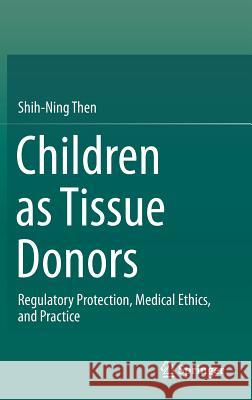Children as Tissue Donors: Regulatory Protection, Medical Ethics, and Practice » książka
topmenu
Children as Tissue Donors: Regulatory Protection, Medical Ethics, and Practice
ISBN-13: 9789811330469 / Angielski / Twarda / 2018 / 245 str.
Kategorie:
Kategorie BISAC:
Wydawca:
Springer
Język:
Angielski
ISBN-13:
9789811330469
Rok wydania:
2018
Wydanie:
2018
Ilość stron:
245
Waga:
0.54 kg
Wymiary:
23.39 x 15.6 x 1.6
Oprawa:
Twarda
Wolumenów:
01
Dodatkowe informacje:
Wydanie ilustrowane











